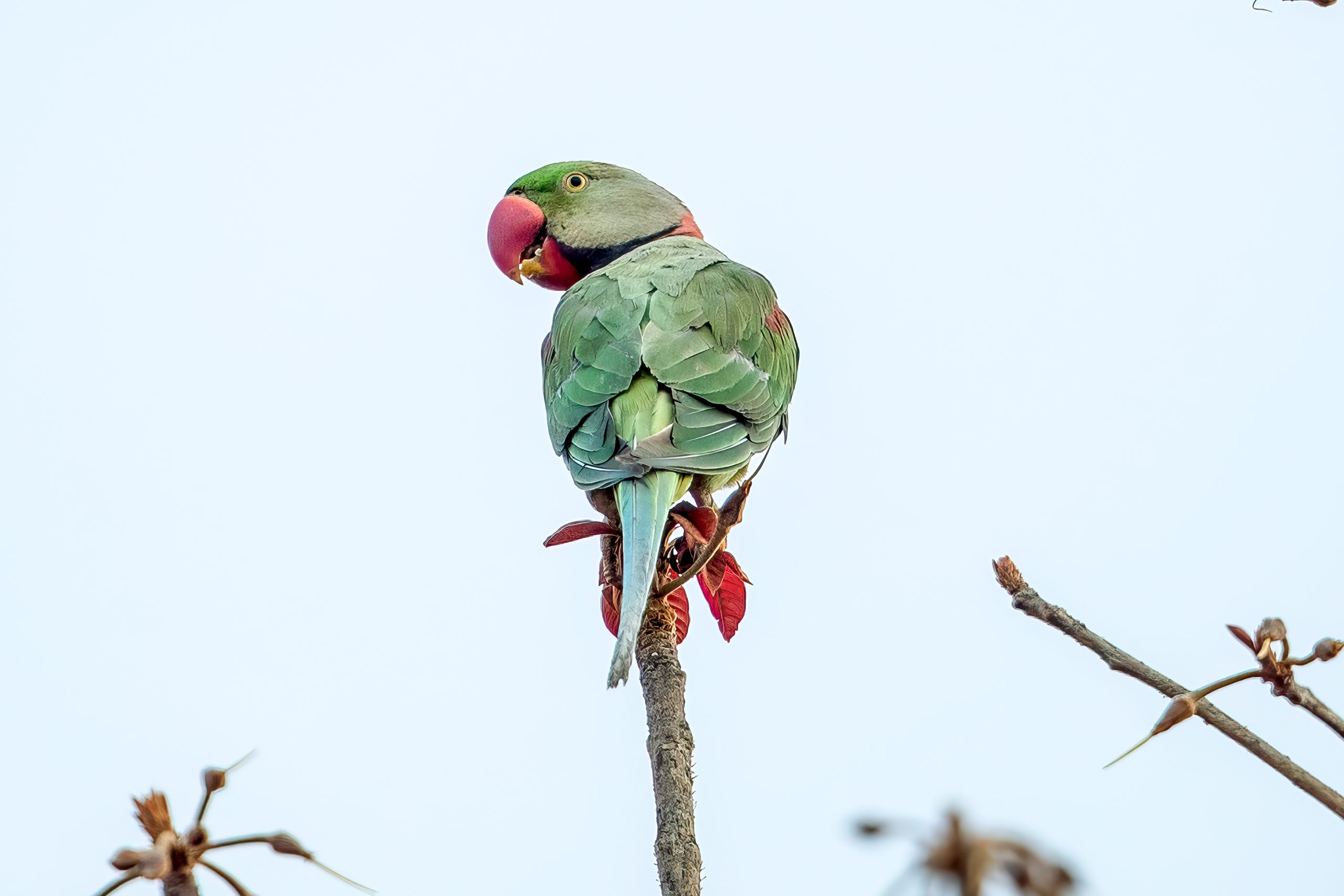Description
The plum-headed parakeet (Psittacula cyanocephala) is a small and vividly colored species of parrot found across the Indian subcontinent. It measures between 33 to 36 cm (13-14 in) in length including its tail feathers. Males have a red and purple head and a read shoulder patch, whereas females has blue-grey head. Both sexes showcases a mixture of green on their body and a blue tail. It is very similar to the blossom-headed parakeet (Psittacula roseata) in Southeast Asia, and the two species were previously considered conspecific. The blossom-headed parakeet has a yellowish tip to its tail and the male has more of a pink head.
Diet & habitat
Plum-headed parakeets are found primarily in forests and woodlands. They adapt well to a variety of forested habitats including deciduous, evergreen, and secondary growths. These birds are predominantly frugivorous, feasting on a variety of fruits, berries, and nuts. They have also been observed consuming blossoms and nectar, demonstrating their ability to exploit different food resources seasonally.
Behavior
These birds are highly social, often seen in small flocks that can sometimes number up to several dozen individuals, especially outside of the breeding season. Their social structure allows for complex interactions and communication, involving a variety of calls and body movements.
In the wild, these parakeets are active foragers, often hanging upside-down or sidling along branches to reach fruits and seeds. They are known for their acrobatic skills which they use to navigate through dense foliage. During the heat of the day, they may be seen bathing in rainwater collected on leaves, which is both a cooling mechanism and part of their grooming behavior to maintain feather health.
Nesting
Breeding season for the plum-headed parakeet typically begins in December and ends in April. In Sri Lanka they may breed in July-August. This species nest in holes in trees where the female lays 4 to 6 white eggs. Incubation is mainly done by the female for about 20 to 23 days. The chicks are altricial, which means they are born blind and featherless, and depend entirely on parental care. Fledging from the nest occurs roughly 6 to 7 weeks after hatching.
Status
The plum-headed parakeet is currently classified as least concern by the IUCN Red List. Although it faces threats from habitat loss and the pet trade, its population is widespread and does not meet the threshold for vulnerability. However, continuous monitoring of its habitat and population size is recommended to ensure long-term survival.








